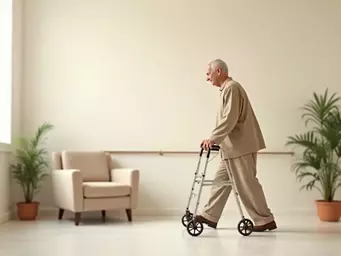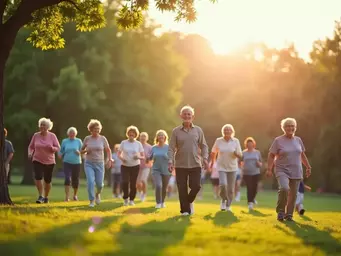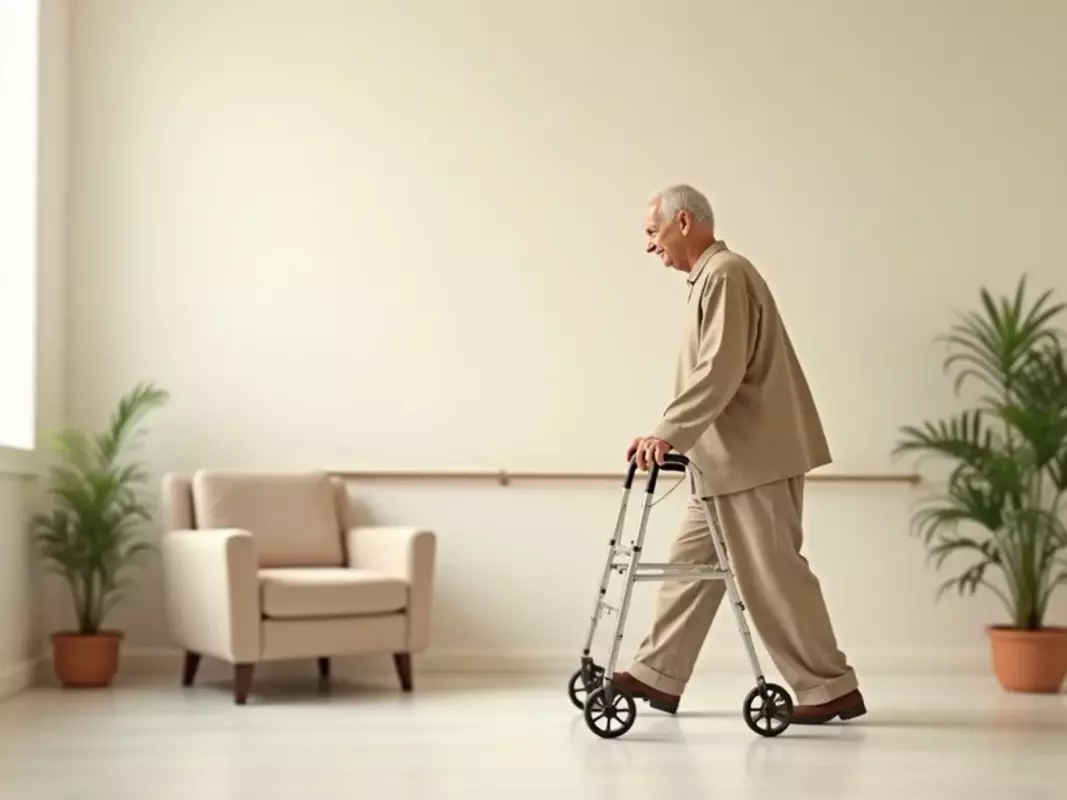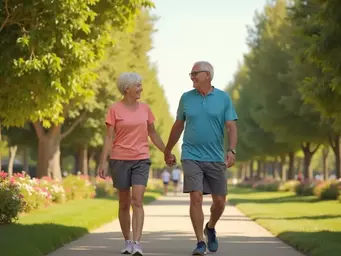Embracing Active Ageing Together
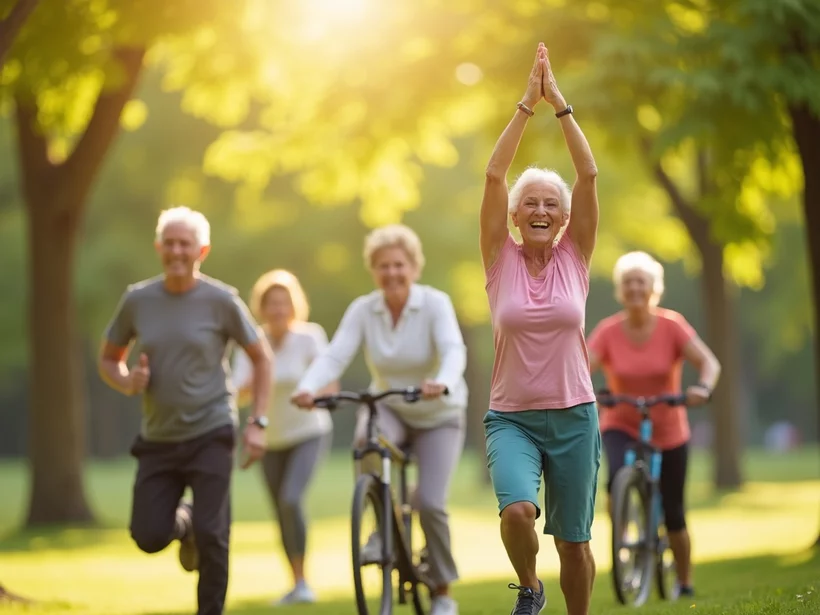
Active ageing is more than just maintaining physical fitness; it's about enhancing the overall quality of life for seniors through health, engagement, and independence. As the population ages, understanding and promoting active ageing through community involvement becomes essential for well-being.
What You Will Learn
- Holistic Definition: Active ageing involves optimizing health, participation, and security to improve the quality of life for older adults.
- Health Benefits: Staying active can significantly reduce the risk of chronic diseases and enhance emotional well-being.
- Active Ageing Index (AAI): This tool measures how nations support their ageing populations, focusing on health, participation, and security metrics.
- Daily Practices: Engaging in regular exercise, maintaining a balanced diet, and nurturing social connections are crucial for promoting active ageing.
- Role of Caregivers: Caregivers can facilitate active ageing by encouraging seniors’ participation in activities while respecting their preferences.
- Technology's Impact: Digital literacy and technology can enhance independence, improve safety, and foster social connections for seniors.
- Practical Tools: Smart home devices and health monitoring apps can help seniors manage their health and stay connected with loved ones.
Daily Practices for Active Ageing
The following practices can significantly enhance the quality of life for older adults, encouraging an active and fulfilling lifestyle.
Stay Active
Aim for at least 30 minutes of exercise most days. Whether it’s walking, swimming, or even gardening, find activities you enjoy!
Eat Well
Focus on a balanced diet rich in fruits, vegetables, lean proteins, and whole grains. Remember, nutrition is key!
Stay Connected
Maintain relationships with family and friends. Social interactions can significantly boost your mood and mental well-being.
Mind Your Mind
Engage in activities that stimulate your brain, like puzzles or reading. Keeping your mind active is just as important as physical activity!
Understanding Active Ageing: Beyond the Basics
As we dive into the concept of active ageing, it’s essential to grasp what it truly means. Active ageing is not just about remaining physically fit; it encompasses a holistic approach that promotes health, engagement, and independence throughout our later years. At Cairns Active Ageing Solutions, we recognize that active ageing allows seniors to live fulfilling lives while cherishing their autonomy. But why is this so important? Well, when older adults remain active and engaged, they often experience better health outcomes and a more positive quality of life.
Defining Active Ageing and Its Importance
So, what exactly is active ageing? It refers to the process of optimizing opportunities for health, participation, and security in order to enhance the quality of life as people age. This approach encourages involvement in social, economic, cultural, and civic activities. Through our work at Cairns Active Ageing Solutions, I’ve seen firsthand how vital it is for seniors to stay active in their communities. Not only does it promote physical health, but it also nurtures emotional well-being! For more information on the World Health Organization's framework for active ageing, you can refer to their comprehensive guide on Active Ageing: A Policy Framework.
- Health Benefits: Staying active can reduce the risk of chronic diseases.
- Social Connections: Engaging in community activities fosters friendships.
- Empowerment: Maintaining independence leads to greater self-esteem.
Ultimately, active ageing is about helping older adults maintain a high quality of life, which brings us to the Active Ageing Index (AAI). This index is a valuable tool that measures how well countries support their ageing populations in terms of health, participation, and security.
Exploring the Active Ageing Index (AAI)
The Active Ageing Index (AAI) is an important measure that provides insights into how different nations foster active ageing among their senior populations. The index considers various factors like health status, participation in the workforce, and social engagement. Understanding these indicators can help us identify areas for improvement in our own community here in Cairns. By aligning our services with the insights provided by the AAI, we can better support the older adults in our region.
- Health Indicators: These assess the physical well-being of older populations.
- Participation Rates: A measure of how seniors are involved in the workforce and community.
- Security Metrics: Evaluates the financial and social safety nets available to seniors.
As we explore the implications of the AAI, it becomes increasingly clear that fostering an environment for active ageing is not just a responsibility but an opportunity. By focusing on the strengths and needs of our community, we can develop targeted strategies to enhance the lives of our seniors, ensuring they thrive in their golden years. Remember, at Cairns Active Ageing Solutions, we’re dedicated to making a difference, one step at a time!
The Domains of Active Ageing: A Comprehensive Overview
Understanding active ageing is just the beginning! Now, let’s delve deeper into the various domains that contribute to an active and fulfilling life for older adults. Each domain plays a vital role in ensuring seniors can navigate their later years with dignity and joy.
Pro Tip
Did you know? Engaging in just 30 minutes of moderate exercise most days can lead to significant improvements in both physical health and emotional well-being for seniors. Consider incorporating fun activities like dancing or group sports to enhance social interaction and enjoyment!
Frequently Asked Questions About Active Ageing
What is active ageing?
Active ageing is a holistic approach that optimizes opportunities for health, participation, and security to enhance the quality of life for older adults. It involves physical activity, mental stimulation, social engagement, and maintaining independence.
What are the key benefits of active ageing?
Key benefits include reduced risk of chronic diseases, improved emotional well-being, enhanced social connections, greater self-esteem through independence, and an overall higher quality of life in later years.
What is the Active Ageing Index (AAI)?
The Active Ageing Index (AAI) is a tool that measures how well different countries support their senior populations in terms of health, participation in the workforce and community, and the availability of financial and social safety nets. It helps identify areas for improvement in policies and services for older adults.
What daily practices promote active ageing?
Daily practices include regular physical activity (e.g., walking, swimming, gardening), maintaining a balanced diet, fostering social connections with family and friends, and engaging in mentally stimulating activities like puzzles or reading.
How can technology assist in active ageing?
Technology can enhance active ageing through digital literacy programs, smart home devices for safety and convenience, health monitoring apps, video conferencing for social connection, and fitness trackers to encourage physical activity, all contributing to greater independence and well-being.
Practical Guidance for Active Ageing: Actionable Insights
At Cairns Active Ageing Solutions, we believe that everyone can take steps to enhance their health as they age. Active ageing isn’t just a trendy concept; it’s a lifestyle choice that can greatly improve your daily life. Are you ready to explore some practical guidance? Let’s dive into the daily practices that can promote active ageing for individuals!
Daily Practices to Promote Active Ageing for Individuals
Engaging in active ageing can be simple and enjoyable! It involves integrating small, healthy habits into your everyday routine. Here are some daily practices you can adopt:
- Stay Active: Aim for at least 30 minutes of exercise most days. Whether it’s walking, swimming, or even gardening, find activities you enjoy!
- Eat Well: Focus on a balanced diet rich in fruits, vegetables, lean proteins, and whole grains. Remember, nutrition is key!
- Stay Connected: Maintain relationships with family and friends. Social interactions can significantly boost your mood and mental well-being.
- Mind Your Mind: Engage in activities that stimulate your brain, like puzzles or reading. Keeping your mind active is just as important as physical activity!
Incorporating Physical Activity into Everyday Routines
Finding time to stay active can be challenging, but it doesn't have to be! Here are some tips to help you incorporate physical activity into your daily life:
- Take the Stairs: Whenever possible, choose stairs over elevators. It’s a great way to get your heart pumping!
- Walk or Cycle: Consider walking or cycling for short trips instead of driving. It’s a two-for-one—exercise and transportation!
- Join a Class: Look for local exercise classes designed for seniors. You’ll meet new friends while staying active!
- Set Reminders: Use your phone to remind you to stand, stretch, or take a short walk every hour. Little breaks can make a big difference!
Supporting Caregivers in Facilitating Active Ageing
Caregivers play a vital role in the active ageing journey. Supporting seniors in leading an active lifestyle can be rewarding, but it also comes with its challenges. Here are some ways to provide that support:
- Encourage Involvement: Help seniors find activities or groups that interest them. Shared experiences can motivate them to participate.
- Be Patient: Encourage without pressure. It’s important to respect their pace and preferences.
- Provide Resources: Share information about local community programs or classes that promote active ageing. The National Institute on Aging offers excellent resources for exercise and physical activity for older adults.
- Offer Physical Assistance: Sometimes, a little help with mobility or transportation can make all the difference in enabling them to stay active.
The Role of Technology in Supporting Active Ageing
With technology advancing at lightning speed, it’s essential for seniors to stay connected and informed. Technology can enhance the quality of life and help seniors remain independent. Let's explore how technology plays a role in active ageing!
Digital Literacy Programs for Seniors
Digital literacy is a crucial skill in today’s world. At Cairns Active Ageing Solutions, we understand the importance of helping older adults navigate technology. Here are some key components of effective digital literacy programs:
- Basic Computer Skills: Teaching seniors how to use computers, tablets, and smartphones can empower them to stay connected.
- Online Safety: Educating about safe browsing practices and privacy protection is vital to ensure their online security.
- Social Media Engagement: Encouraging the use of social media to connect with family and friends can help reduce feelings of isolation.
- Access to Resources: Providing access to online healthcare information and community resources can enhance their independence.
Leveraging Technology to Enhance Quality of Life
Technology can truly transform the lives of seniors! Here are some innovative ways to leverage technology for improved quality of life:
Technology for Seniors: Tools for Independence
From smart home devices to wearable fitness trackers, technology offers many tools that can support independence. Here are some examples:
- Smart Home Devices: Devices that control lighting, heating, and security can make homes safer and more manageable.
- Health Monitoring Apps: Using apps to track medication schedules or exercise routines can help seniors stay on top of their health.
- Video Conferencing: Platforms like Zoom or Skype allow seniors to connect with loved ones or attend virtual classes, reducing feelings of loneliness.
- Fitness Trackers: Wearable devices can motivate seniors to stay active and achieve their fitness goals.
As we can see, embracing technology can significantly benefit seniors in their journey towards active ageing. At Cairns Active Ageing Solutions, we’re here to support these initiatives and provide resources tailored for our community.
Recap of Key Points
Here is a quick recap of the important points discussed in the article:
- Holistic Approach: Active ageing is a comprehensive concept that includes health, social engagement, and independence.
- Active Ageing Index (AAI): The AAI measures how well countries support their ageing populations through health, participation, and security metrics.
- Daily Practices: Incorporate regular exercise, balanced nutrition, social interactions, and mental stimulation into daily routines to promote active ageing.
- Caregiver Support: Encourage seniors’ participation in activities while respecting their pace, and provide resources to facilitate their engagement.
- Technology Utilization: Enhance quality of life through digital literacy, smart home devices, health apps, and online social engagement to promote independence.
